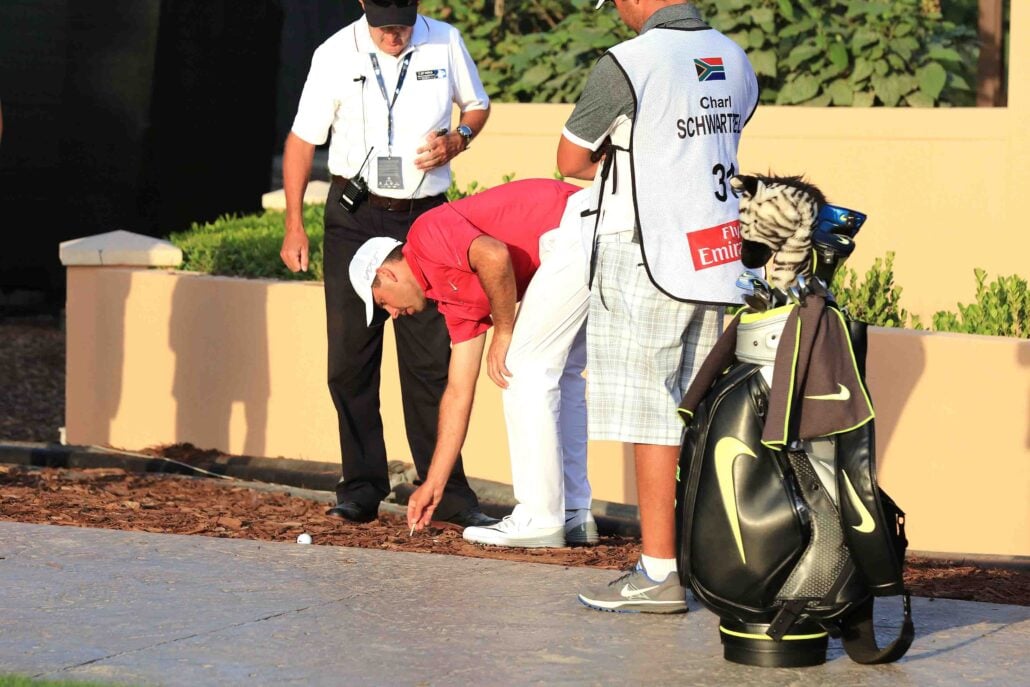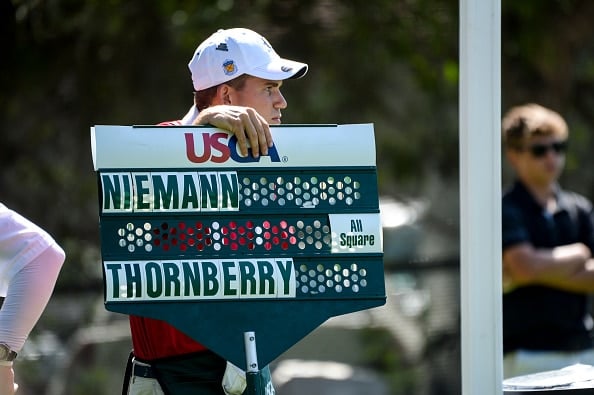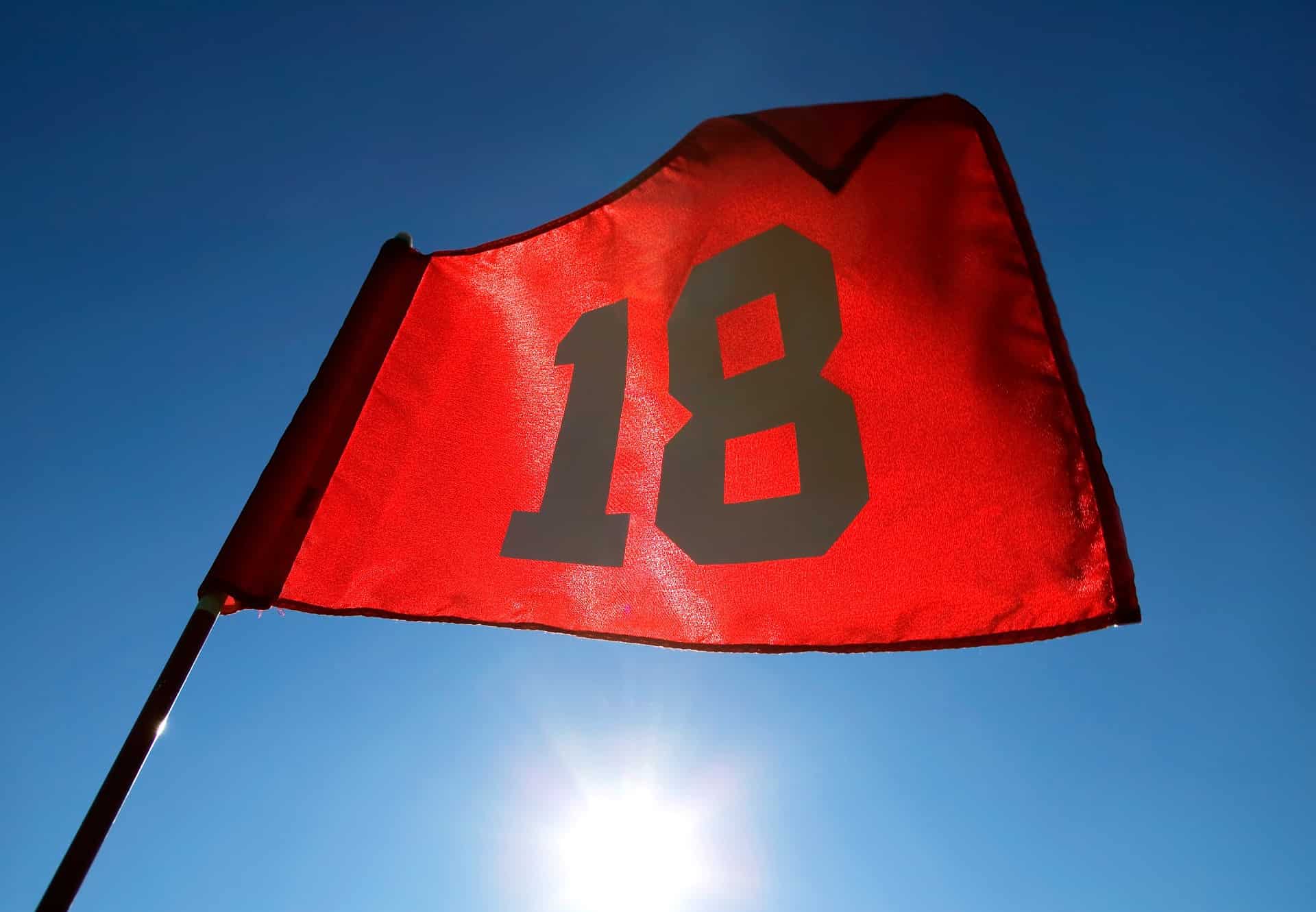
What are immovable obstructions and how do you take relief?
Something you can’t move affecting your stance or swing? Our Rules of Golf expert paves the way ahead for you
Some obstacles you can shift. Some you can’t. You can move a bottle. That road? It isn’t going anywhere in a hurry. We’ve looked at movable obstructions. Now we’re turning our attention to the immovable obstruction golf rule.
Like their more flexible cousins, you’ll usually have the option not to play the ball as it lies if you tangle with one of these. But what actually are they, and how do you go about taking relief?
Everything you need to know the immovable obstruction golf rule
What are immovable obstructions?
Any guesses? Yes, of course you’re right. An immovable obstruction is any that “cannot be moved without unreasonable effort or without damaging the obstruction or the course”.
The definition for this, though, goes further – and what it adds can prove crucial. It says it is also an obstruction that wouldn’t otherwise meet the definition of movable.
Your competition committee can define any obstruction to be immovable, “even if it meets the definition of movable obstruction”.
That’s why you must always peek at the Local Rules in the locker room, or on the back of the scorecard, to make sure you don’t get caught out.
A committee can also decide, in the case of a path or a road, that it’s an integral part of the course. The famous Grannie Clark’s Wynd crossing the Old Course at St Andrews, for instance, is a very famous example of a road that you’ll need to play from if your ball stays on it.

When can I take relief from immovable obstructions?
Immovable obstructions are classed as abnormal course conditions and so, like animal holes, ground under repair and temporary water, they are dealt with under Rule 16.
And you take relief in the same way you would for any of those other conditions.
So you have the option to do so if your ball either touches, or is on or in an immovable obstruction, if it interferes with your area of intended swing or stance.
Two key points here. Firstly, if the immovable obstruction is close enough to distract you but doesn’t meet any of these requirements just outlined, Rule 16.1a (1) says there is “no interference under this Rule”. That means no relief.
The same also applies if the immovable obstruction is on your line of play. Your ball might hit that big building in front of you but, if it doesn’t get in the way of your stance or swing, hard luck.
There are a couple of exceptions. One is the unlikely event that when your ball is on the green an immovable obstruction intervenes in your line of play on the putting surface.
The other you see on the professional tours a lot with temporary immovable obstructions. That’s why they can take relief for ‘line of sight’ interference from a grandstand.
How do I go about taking relief?
Taking relief from an abnormal course condition can vary slightly depending on what part of the course you’re in but, most of the time, the immovable obstruction is going to be in the general area and so Rule 16.1b applies.
When taking relief under this rule, you’re going to be dropping. You can use your original ball, or another ball, and the act needs to take place in a relief area.
First, find your reference point. That is the nearest point of complete relief in the general area. But there are a couple of things you must bear in mind.
Firstly, there has to be complete relief from all interference by the immovable obstruction. If you take a drop and there is still interference, you need to take relief again.
And ‘nearest’ does not mean ‘nicest’. If you’re nearest point of complete relief is in a bush, and you decide to take relief from the abnormal course condition, you’re going to have to drop in that bush.
You get a one club length relief area but it can’t be nearer the hole than the reference point and, if you’re taking relief in the general area, the relief area has to be in that part of the course as well.
Got a question for our expert?
Despite the changes to the Rules of Golf in 2019 and 2023, there are still some that leave us scratching our heads. I’ll try to help by featuring the best of your queries in this column.
What do you think about this immovable obstruction golf rule and abnormal course conditions rules in general? Let me know by leaving a comment on X.
Steve Carroll

A journalist for 25 years, Steve has been immersed in club golf for almost as long. A former club captain, he has passed the Level 3 Rules of Golf exam with distinction having attended the R&A's prestigious Tournament Administrators and Referees Seminar.
Steve has officiated at a host of high-profile tournaments, including Open Regional Qualifying, PGA Fourball Championship, English Men's Senior Amateur, and the North of England Amateur Championship. In 2023, he made his international debut as part of the team that refereed England vs Switzerland U16 girls.
A part of NCG's Top 100s panel, Steve has a particular love of links golf and is frantically trying to restore his single-figure handicap. He currently floats at around 11.
Steve plays at Close House, in Newcastle, and York GC, where he is a member of the club's matches and competitions committee and referees the annual 36-hole scratch York Rose Bowl.
Having studied history at Newcastle University, he became a journalist having passed his NTCJ exams at Darlington College of Technology.
What's in Steve's bag: TaylorMade Stealth 2 driver, 3-wood, and hybrids; TaylorMade Stealth 2 irons; TaylorMade Hi-Toe, Ping ChipR, Sik Putter.










